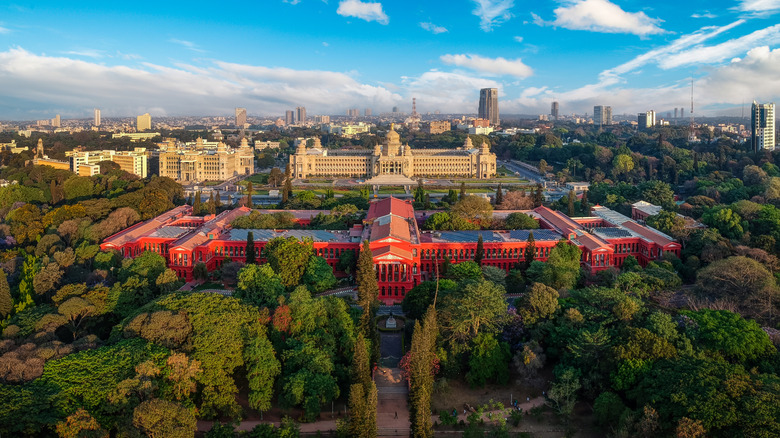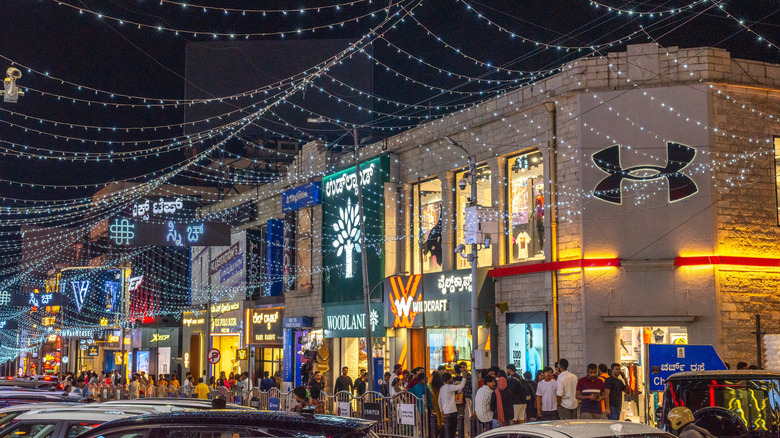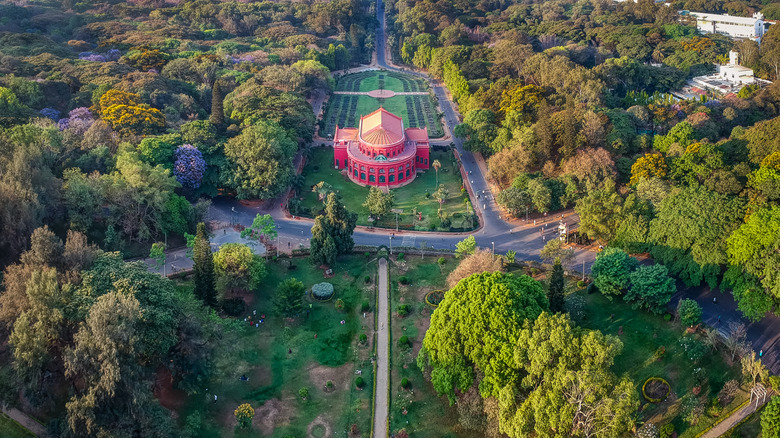The 'Silicon Valley Of India' Is A Captivating, Green City Chock-Full Of Trendy Dining And Shopping
As a thrilling place of discovery, India draws tourists from all over the world. Whether you are visiting the Taj Mahal in Agra, exploring the bustling streets of Mumbai, or enjoying the gorgeous beaches of Kerala, there are incredible experiences all across one of the world's most socially and ecologically diverse countries, whether you stay north or head south. In the cities, you'll notice a country on the move with a pulsing, limitless energy at all hours of the day.
Bengaluru — formerly known as Bangalore and the capital city of Karnataka in southern India — is one of the main drivers of the country's boom. Known as the Science City, it sits at the heart of India's Silicon Valley and is awash with delicious foreign and local cuisine as well as money. Bengaluru has the fastest-growing number of millionaires in India and a growing number of ways to spend. In parts of the city, you'll find trendy shops, social media-worthy restaurants, and plenty of green space to unwind and relax away from the hustle and bustle of India's third-largest city.
Karnataka and Bengaluru both have a rich and complex history. Though records indicate that Bengaluru is an ancient city, its modern history starts in 1799, when British forces killed Tipu Sultan, the king of Mysore, and subjugated his kingdom as a princely state of the British Raj until 1947. Under the British, Bangalore developed rapidly as the city's colonial administrators built grand buildings, parks, and lakes. Since India gained independence in 1947, Bengaluru has boomed from approximately 750,000 residents to over 12 million today.
India's upstart cosmopolitan metropolis
Cosmopolitan Bengaluru has earned the moniker "the Silicon Valley of India" thanks to the city's fertile environment for development and entrepreneurship. Billions in venture capital investments and partnerships between local government, world-renowned universities, and major tech firms have developed Bengaluru into India's future tech hub, where trendy restaurants, hotels, and shopping areas have sprouted up along the fast-paced hustle of traditional marketplaces. To experience and gain a better understanding of the city in the present, past, and future, purchase a multi-day metro pass for 400 rupees (less than $5) and visit the city's primary commercial and entertainment areas.
Mahatma Gandhi (commonly called MG) Road and MG station lie at the heart of many of Bengaluru's modern shopping experiences and bars. Three of the city's major shopping areas, Church Street, Rest House Road, and Brigade Road, are home to many affordable, quality hotels, cuisines, and brands from around the world, all within a few minutes' walk from the station. Nearby, UB City Mall offers a luxurious shopping experience similar to what you'll find in the region's megamalls.
For some of Bengaluru's best restaurants and pubs, take the metro to Indiranagar. From my experience, TREAT had some of the best north Indian curries I ate on my trip to Bengaluru, and Toit across the street pours microbrews that rival anything in the West. If you are going local, don't miss the bustling outdoor markets outside of Chikpet Station, as well as 2nd Cross Road in the heart of Bengaluru. Cafe Amudham has incredible South Indian food and milk tea. While walking around and on the trains, protect yourself from pickpockets (especially children!)
Bengaluru's iconic parks and green spaces
Before Bengaluru became known as India's "Silicon Valley," it was known as the country's "Garden City" thanks to its open green spaces. Two of the largest — Lalbagh Botanical Garden and Sri Chamarajendra Park, commonly called Cubbon Park — are absolute must-visits due to their natural beauty and historical legacies. Here, you'll likely find some peace and tranquility in the otherwise chaotic city.
Bring a book to read (or grab one at the gorgeous State Library) on your magnificent afternoon at Cubbon Park. As you begin exploring the 300-acre park full of fountains, flower gardens, and history, you'll be greeted by statues of Edward VII, Queen Victoria, and across the road, Mahatma Gandhi. The park's well-manicured and tree-covered paths include a mix of local and exotic trees brought to India by the British, along with vibrant flower gardens. On Sundays, you'll likely see local yoga classes, farmers' markets, and families out for a breath of fresh air.
To the south, Bengaluru's Lalbagh Botanical Garden has over 240 acres of greenery and features a glass house similar to London's Crystal Palace. As you stroll through the botanical garden toward Lalbagh Lake and its beautiful waterfall, you'll be enraptured by the serene and peaceful atmosphere. Like the rest of these attractions, take the metro to Lalbagh Station to minimize your headache from the horns and traffic. Based on my experience and the experiences of other tourists, you may have trouble finding a local SIM card, making navigation difficult. When visiting India, follow these airport suggestions from Rick Steves and get a SIM soon after arrival.


